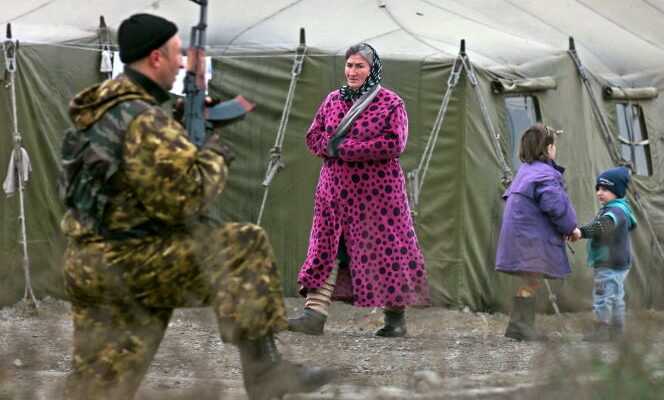To each of his Western interlocutors passing through kyiv, Volodymyr Zelensky evokes the fate of his compatriots forced to flee, towards Russia, the incessant bombardments on the city of Mariupol. According to the Ukrainian president, there would thus be thousands, as he reiterated during the whirlwind visit, on April 24, of the American Secretary of State, Antony Blinken, transported to Russian territory via “filtration camps”. Three days earlier, on April 21, reporting to Vladimir Putin on the ” plug “ of Mariupol, the Russian Ministry of Defence, Sergei Shoigu, himself put forward the figure of 142,000 Ukrainians evacuated from the city by Russian forces.
From the beginning of March, barely a few days after the start of the war launched by the Kremlin against Ukraine, the question of humanitarian corridors to evacuate civilians from this large port city, located on the shores of the ‘Azov, raised suspicions. On the Russian side, these corridors would in fact lead to camps from which civilians could leave, while others, deemed suspicious by the Russian authorities, would disappear. On March 24, on its Instagram account, the municipality of Mariupol, surrounded for three weeks, thus alerted on forced evacuations of inhabitants “taken to filtration camps”, by bus or conveyed on board vehicles, before being distributed on the other side of the border, towards Taganrog, Rostov, and other Russian cities.
Cell phone searches
This practice is not new. During the first war in Chechnya in the early 1990s, then again during the second war which began under Vladimir Putin in 1999, “filtration camps”, according to the same expression, were created. In these centers, “boeviki” fighters identified as such, or suspected of having taken up arms against Moscow, were savagely tortured.
In Ukraine, the rare testimonies collected so far by the international press on the existence of these camps converge: the displaced have to wait for days, and undergo intense interrogations there. The contents of their mobile phones are checked, the tattoos on their bodies, supposed to testify to their belonging to the Ukrainian Azov battalion, are inspected. And no one can say for sure what happens to the others.
A “process” also identified by Human Rights Watch on the basis of accounts of people taken to Bezimenne, a locality located in the self-proclaimed pro-Russian republic of Donetsk. “Russian personnel took fingerprints and their personal data, photographed them and had them fill out a questionnaire, including on their ties to the Ukrainian military and their political views,” relates the NGO in a press release published on April 26.
You have 8.61% of this article left to read. The following is for subscribers only.
